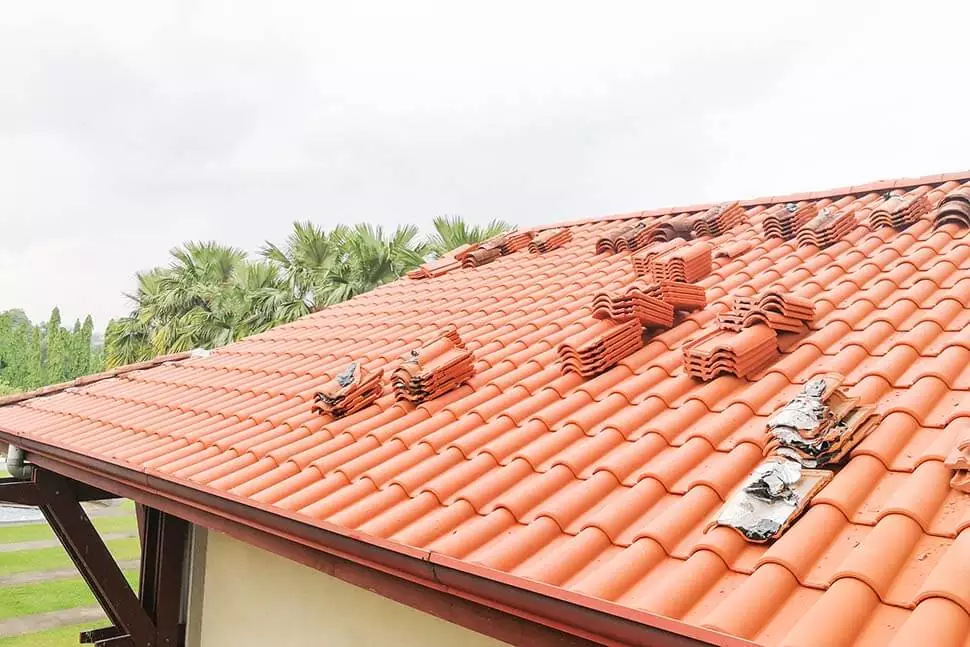A tile roof can be a stunning and durable addition to your home, but like all roofing materials, it has a finite lifespan. Knowing when to replace your tile roof is essential to prevent issues such as leaks, water damage, and costly repairs. In this article, we’ll explore the factors that influence how often a tile roof should be replaced to help you make an informed decision.

Understanding Tile Roof Longevity
Tile Material:
The material of your tile roof plays a significant role in its lifespan. Common tile materials include clay, concrete, and slate. Each type has its unique properties and longevity:
- Clay Tiles: Clay tiles can last anywhere from 50 to 100 years or more, making them one of the most durable options.
- Concrete Tiles: Concrete tiles have a lifespan of around 30 to 50 years, depending on the quality and maintenance.
- Slate Tiles: High-quality slate tiles can last well over 100 years, sometimes even centuries.
Climate and Weather Conditions
The climate in your region has a direct impact on the lifespan of your tile roof. In areas with extreme weather conditions, such as heavy rain, hail, or extreme temperatures, roofs tend to wear out faster. For instance, a tile roof in a mild, temperate climate may last longer than one in an area prone to hurricanes or severe storms.
Maintenance and Repairs
Regular maintenance and prompt repairs can significantly extend the life of your tile roof. It’s essential to inspect your roof periodically for broken or cracked tiles, loose or missing mortar, and damaged flashing. Addressing these issues promptly can prevent further damage and prolong your roof’s lifespan.
Installation Quality
The quality of the original installation also affects how long your tile roof will last. A professionally installed roof with proper underlayment and flashing will generally have a longer lifespan than a poorly installed one.
Color and Finish
The color and finish of your tile can impact its longevity. Light-colored tiles reflect more sunlight and heat, which can help reduce wear and tear caused by temperature fluctuations. Additionally, some tiles have protective coatings that enhance their durability.
How Often Should You Replace a Tile Roof?
Based on the factors mentioned above, here are some general guidelines for when you might need to replace a tile roof:
- Clay Tiles: These can last a century or more, so replacement may not be necessary in your lifetime if well-maintained.
- Concrete Tiles: Plan for a replacement around the 30- to 50-year mark, depending on the quality and climate.
- Slate Tiles: High-quality slate roofs can last for centuries, but you may need to replace individual damaged tiles periodically.
Signs Your Tile Roof Needs Replacement
- Visible Damage: Cracked, broken, or missing tiles are clear indicators that your roof needs attention.
- Water Leaks: If you notice water stains on your ceilings or walls, it’s a sign that your roof’s integrity has been compromised.
- Loose Tiles: Tiles that have become loose or dislodged can allow water to penetrate and should be addressed promptly.
- Mold or Mildew: The growth of mold or mildew in your attic or on your roof’s surface suggests moisture infiltration and potential structural damage.
Conclusion
Determining how often a tile roof should be replaced depends on various factors, including the type of tile, climate, maintenance, and quality of installation. While tile roofs are known for their durability, it’s essential to be vigilant in inspecting and maintaining your roof to ensure it reaches its full lifespan. Regular assessments and timely repairs can extend the life of your tile roof, keeping your home safe and dry for many years to come.



Leave a Reply